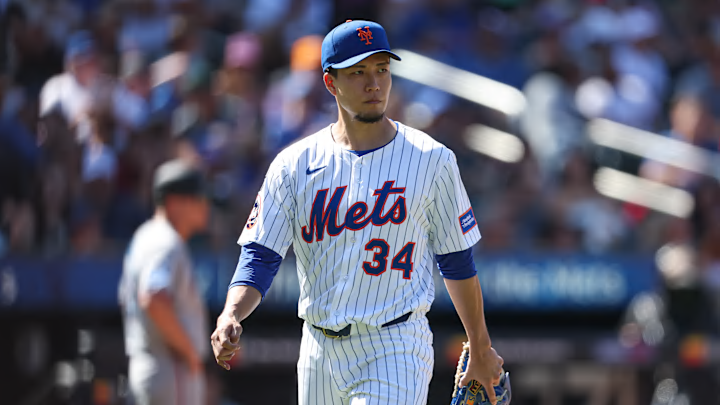After the magic of 2023, where Kodai Senga emerged as an All-Star and a Cy Young Award finalist, it’s understandable that New York Mets fans held onto hope for a similar, or even better, 2025. His initial season performance, before a hamstring strain sent him to the injured list, seemed to be building toward that reality. His ERA was low, and the ghost fork was as unhittable as ever.
But since his return, the Senga on the mound has been a far cry from the pitcher who mesmerized baseball just a year ago. The recent conversations about a potential minor league demotion, while a last-ditch effort to "get right," must be met with a cold, hard dose of reality. The problem with Senga doesn’t appear to be a simple case of mechanics, rhythm, or a slump he can shake off. Instead, the numbers point to a deeper, more concerning issue.
Mets will know by Friday whether Kodai Senga is willing to accept a minor league assignment.
— Mike Puma (@NYPost_Mets) September 3, 2025
The numbers tell a grim story
The biggest red flag for Senga's 2025 season is not his ERA, which remains a respectable 3.02, but rather the underlying Statcast data that paints a much different picture. For his career, Senga’s four-seam fastball has averaged over 95 mph. In 2025, that average has dropped, hovering around 93 mph. While a two-mph drop might seem minor, it’s a seismic shift for a pitcher whose success is built on the lethal deception between his fastball and his signature ghost fork.
This lack of fastball velocity has had a direct and measurable impact on his secondary pitches. The ghost fork, which previously held an incredibly low average exit velocity of 77 mph and a whiff rate north of 19% for his career, has been hit with more authority this year. Hitters are no longer fooled by the differential, as the slower fastball allows them to time the pitch better. That is evidenced by the average exit velocity against his ghost fork being up several miles per hour in 2025, and its whiff rate plummeting to below 15%.
When Senga’s fastball isn’t a legitimate threat, the ghost fork loses its magic. The entire arsenal becomes less effective, as hitters can sit on the off-speed pitch, confident they can make solid contact. For Senga, a veteran who has dominated for years in the highest-stakes environments of Japanese baseball, a minor league stint is a blow to his pride and a public admission of a profound issue. This is no longer a matter of a pitcher being out of sync; it’s a matter of his primary weapon being blunted.
The hard truth for Mets fans is that Senga’s problem may not have a simple solution, and we may not see the Senga of 2023 again. A minor league assignment may not accomplish anything since his struggles seem tied more to a loss of velocity than a mechanical flaw. Fans have to accept that he might not be the same pitcher again.
Pitchers can be "re-invented" and to do that, he'd have to change his entire pitch distribution, learning to trust new pitches and abandoning the formula that made him so successful. The minor leagues may provide a respite from the scrutiny of New York, but they won't bring back the lost velocity that made him a superstar. That’s a bitter pill to swallow, but it’s the reality the Mets and their fans must confront as they navigate the remainder of this crucial season.
